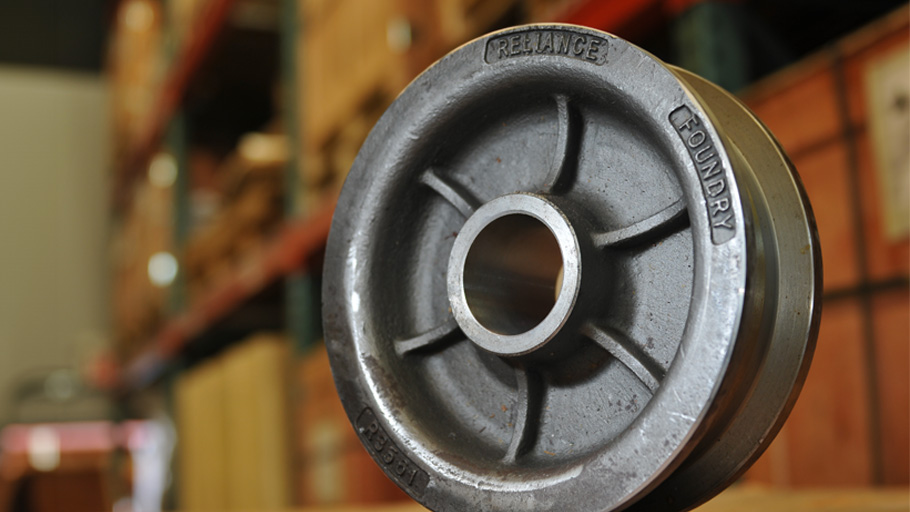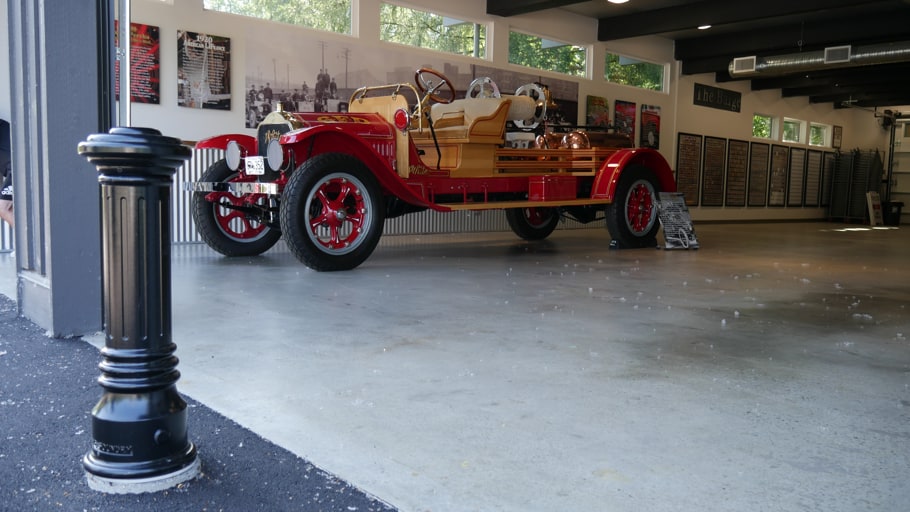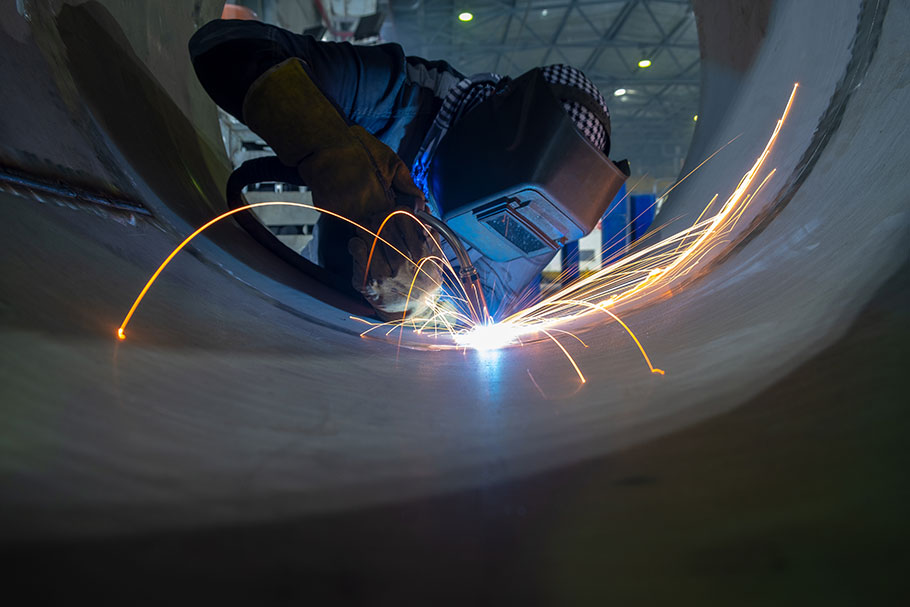Extraction, processing, and casting in foundries
The growing popularity of aluminum
Aluminum is the third most abundant element in the world, and the most abundant metal in the earth’s crust. Aluminum contributes to more than 8% of the earth’s core mass. However, it is difficult to refine compared to other metals, such as iron. For this reason, the use of aluminum has lagged behind other metal products while efficient and cost-effective methods were developed to overcome these complexities.
There are many similarities between the aluminum and steel industries. Both rely on the extraction of metals from mineral ores occurring in the earth’s surface. The manufacturing processes of both are energy intensive and involve pouring liquid metal into casts or using continuous casting machines. Aluminum and steel also compete in similar markets for the automotive and aerospace industry. However, there are significant differences in the processing and properties of these metals.
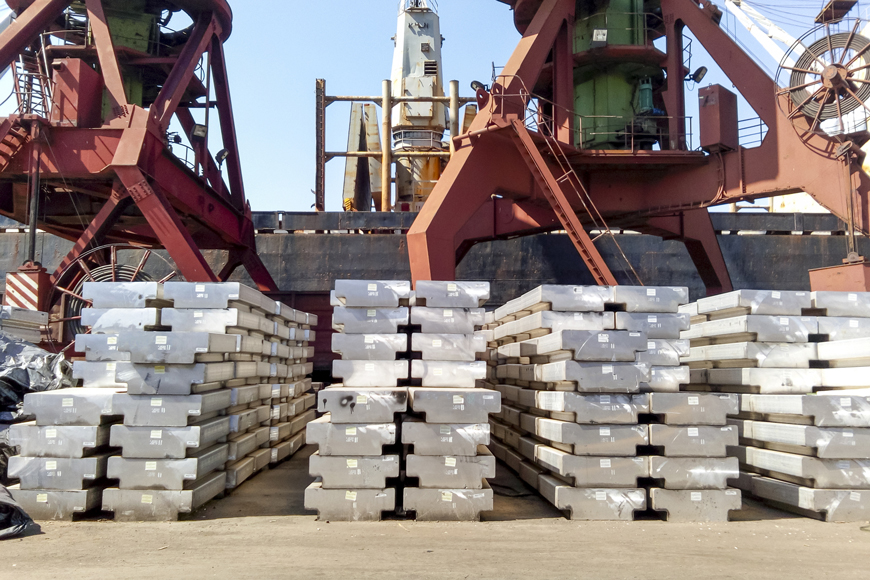
Aluminum processing
Bauxite is a sedimentary rock containing high aluminum content; typically, about 46–60%. Bauxite is often covered by several meters of rock and clay, which must first be removed before the bauxite can be recovered. The bauxite then goes through crushing or washing plants before being transported for processing.
In the mid-1880s, two distinct methods were invented and used in series to produce aluminum. The Bayer method uses a chemical process to extract aluminum from bauxite. The Hall-Heroult process uses electrolysis to extract aluminum from the alumina or aluminum oxide produced by the Bayer process.

Bayer process
Bauxite ore is crushed and mixed with caustic soda to produce a slurry containing fine particles of ore. The slurry is held at temperatures between 140˚C–280˚C, depending on the specific ore being processed. During this time, the aluminum dissolves into the caustic soda solution. All the impurities settle out of the solution into a residue called red mud.
The final step in the process is the addition of seed crystals to the caustic soda solution. Dissolved alumina attaches to these seed crystals. The final product from the Bayer process is alumina or aluminum oxide, which has the appearance of a white powder.
Hall-Heroult process
The reduction unit of an aluminum plant consists of reduction pots or cells which are connected in series. Each pot is made of a steel shell lined with carbon. Molten cryolite (a fluoride mineral) containing aluminum oxide is poured into each pot and carbon electrodes are inserted into the solution from the top. As the current passes through the cryolite solution, aluminum separates from oxygen, forming carbon dioxide gas. Liquid aluminum collects at the bottom of the pot.
Liquid alumina is then sucked from the reduction pots at regular intervals into vacuum buckets. This is transferred into a furnace and cast into ingots in molds, or by a continuous casting machine. Aluminum produced through this process is approximately 99.8% pure. The electrolytic process for aluminum production is very energy intensive, requiring 15MWH per ton of output. Most smelters are therefore located next to a power generator such as hydroelectric plants.
Aluminum casting
Once the aluminum has been extracted and processed, the next step involves casting it into product form. Aluminum castings are formed by pouring molten metal into molds that have been shaped by a pattern of the desired final product. Three common types of molding methods are used to produce castings: die casting, permanent mold casting, and sand casting.
Die casting
Die casting uses pressure to force molten aluminum into a steel die. This type of casting is often used for mass production of parts, which require a minimum amount of finishing and machining. Die casting has short cycle times but high costs for tooling. The pressurized casting system creates a high strength skin but weaker interior than permanent mold casting. There are two types of die casting: low-pressure and high-pressure die casting.
DIE CASTING
LOW-PRESSURE
HIGH-PRESSURE
Good strength values
Lower strength values
Suitable for automation
Suitable for automation
Simple die and machine technology
Complicated and expensive dies
Slower casting cycles
Short casting cycles
Lower investment and operating costs
High investment and operating costs
Minimum wall thickness of approximately 3 mm
Suitable for thin-walled components
Permanent mold casting
Permanent mold casting uses steel or other metal molds and cores. Strong castings are formed by pouring aluminum into the mold. Permanent molds are used to create highly repeatable parts with consistency. Their rapid cooling rates generate a more consistent microstructure, which can improve the mechanical properties significantly.
Permanent mold casting is used for creating alloy wheels. Aluminum wheels are also lighter than steel wheels, requiring less energy to rotate. They provide greater fuel efficiency, as well as better handling, acceleration, and braking. However, for heavy-duty industrial track applications, steel wheels are more commonly used. Their durability makes them almost impossible to bend or crack. When used on a track, steel wheels are more forgiving of track irregularities, increasing safety.
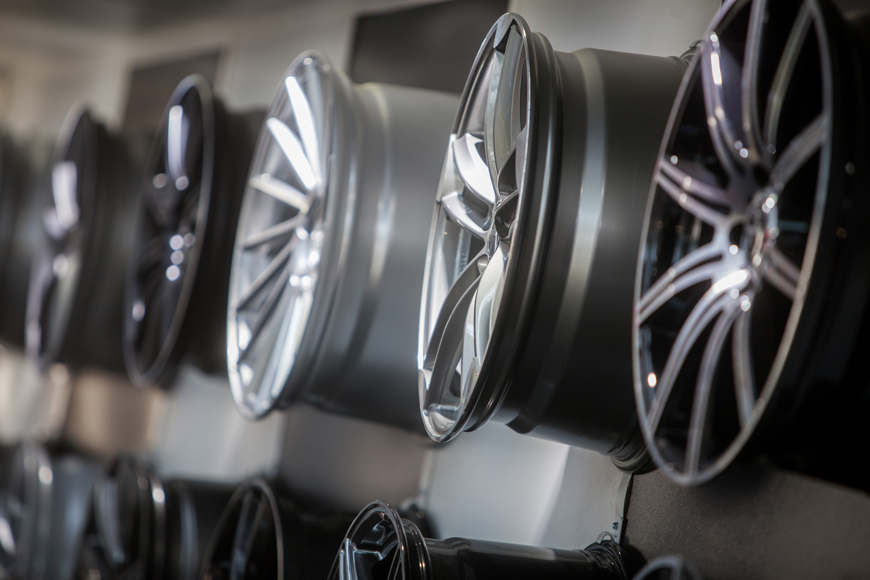
Sand casting
Sand castings are created by packing a fine sand mixture around a pattern of the desired product. The pattern is slightly larger than the final product to allow for shrinkage of the aluminum while cooling. Sand casting is economical because the sand can be reused multiple times. It is also effective for creating large moldings or those with detailed designs. Upfront tooling costs are low, but per-part prices are higher, making sand casting suitable for specialized castings over mass production.
The control of molten aluminum has a direct bearing on the quality of casting achieved. Alloying elements are added to molten aluminum to achieve the aluminum grade and properties desired. Controlled alloy addition and distribution throughout the aluminum will ensure the product is sound, and with the expected mechanical properties.
Aluminum solidifies with a columnar grain structure. These columns grow to the point of contact with another grain—the more grains, the finer the molecular structure. Grain refining uses titanium and boron to create grain nucleus sites to achieve this fine structure.
Hydrogen gas is an impurity that can cause defects in the aluminum casting by creating pores as the product solidifies. During casting, degassing and purge gasses are required to keep the environment free of any impurities that may negatively impact the final product.
Casting alloys
A wide range of casting alloys are available to suit the final application. Each of these casting alloys has its own characteristics such as weldability, machinability, corrosion resistance, and heat treatment properties.
Molten aluminum has several characteristics that can be controlled to maximize casting properties. Molten aluminum is prone to picking up hydrogen gas and oxides in the molten state, and may be sensitive to minor trace elements. Although some decorative or commercial castings may not require additional processing, further finishing is often beneficial. Tight melt control and specialized molten metal processing techniques can provide enhanced mechanical properties.
Aluminum finishes and coatings
One of the aesthetic appeals of aluminum is its high reflectivity. This characteristic has been exploited to make high-end consumer products with a clean surface finish. This is further enhanced by the natural formation of a thin oxide layer on the surface. This layer can be made thicker by anodizing the product. The presence of the oxide layer effectively seals the aluminum from further oxidation, making it very corrosion resistant. Various finishes and coatings can help aluminum achieve this lustrous yet durable quality.
Finishes
Certain aluminum alloys are heat treated to enhance their properties for specific applications. Solid cast aluminum is heated to a predetermined temperature, which causes the molecular microstructure to become evenly distributed throughout the material. Rapid cooling then causes the microstructure pattern to remain in place and the ideal properties are achieved.
Alloys that cannot be heat treated are finished by cold working, primarily rolling. The metal strength is greatly enhanced as imperfections in the microstructure are minimized by tightly compacting molecules together.
Coatings
Aluminum has a high-quality surface finish that is already aesthetically pleasing. However, different coatings can offer further benefits to the finish.
PVDF coatings
PVDF coatings are solvent-based paints with a very high resistance to weathering. However, they can be scratched. PVDF does not fade from exposure to sunlight and can be made with a metallic appearance.
Liquid paints
Liquid paints are more economical than PVDF coatings but their properties are also less desirable. They have a lower quality finish and weather resistance is not as strong.
Powder coatings
Powder coatings meet the most stringent durability specifications to the same level as PVDF coatings. They have excellent finish appearance and are popular in building applications for window and door frames, as well as for site furnishings like bollards and bike racks. They endure more wear and tear, and are often specified in high-traffic areas such as hotels and stores.
Anodizing
Anodizing is used to thicken the oxidized surface layer and enhance the corrosion resistance of the product. The coating is hard, durable, and self-repairing, making it a popular choice for architects. The anodizing process is carried out using a sequence of dip tanks.
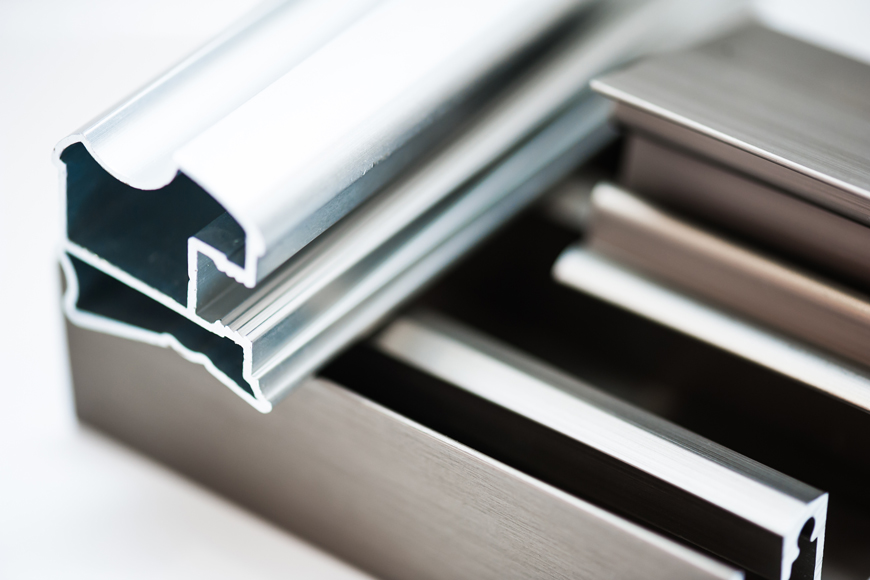
Aluminum properties
Aluminum is well known for being lightweight. In fact, it is almost three times lighter than iron, with a density of 2,700 kg/m3. Remarkably, the low density of aluminum does not affect its strength. Aluminum alloys have a wide range of strength characteristics with tensile strengths ranging from 70 to 700 MPa. At low temperatures, the strength of aluminum increases, while at high temperatures, it decreases.
Aluminum can also be easily machined, and the power required is low due to the lower density. The high levels of malleability of aluminum give it the ability to be extruded easily. This enables the product to be bent and rolled, and is a key characteristic in the creation of aluminum foils.
Aluminum quality and standards
Aluminum products are certified according to the alloying material used in the product. The most common alloying elements include the following:
- Silicon
- Iron
- Copper
- Magnesium
- Zinc
Health and safety
During the Hall-Heroult process, large amounts of gasses are emitted. These gasses are captured and treated as the toxic fluoride compounds must be removed before they are released into the atmosphere. The aluminum production process generates CO2, resulting in a higher carbon footprint for aluminum products. Many manufacturers locate the aluminum smelters alongside renewable energy sources, such as hydropower plants, rather than generating the electricity from fossil fuels.
In its soluble form, Al3+, aluminum is toxic to plants. Acidic soils tend to speed up the release of Al3+ from its minerals and lower the product yields from these fields. As almost half the arable land worldwide is acidic, the negative impact of aluminum on crop yields can be severe.
The human body can also be affected by aluminum. Health effects of a buildup of aluminum include an increased risk of Alzheimer’s disease and some cancers, although not conclusively proven. At high concentrations, aluminum is a neurotoxin, which acts on the brain and bone structure. Aluminum is found in leaven, emulsifying and coloring agents, as well as some antacid products.
Aluminum applications
Aluminum is a well-rounded metal with a luminous finish that caters to a diverse market including various commercial and household goods.

Aerospace
Advances in the aerospace industry have been substantially dependent on the development of aluminum products. Their combination of properties, especially its light weight and strength, have enabled humankind to develop vehicles that are strong and light enough to escape the earth’s atmosphere. The Wright brothers used aluminum for the engine crankcase of their first wood-frame biplane. Modern commercial transport planes consist of 80% aluminum—found mostly in their airframes, especially for fuselages and wings. Aluminum is used extensively in the space industry for shuttles and structures at the international space station.

Construction and architecture
Power grids and electrical transmission lines have transferred to aluminum rather than copper as a base. This is due to the excellent conductivity and light weight for extended lengths of cable runs. Aluminum alloys are also used in construction to provide strong frames that can handle the significant weight of large glass panes. Architects use these characteristics extensively in airports and high-rise buildings.
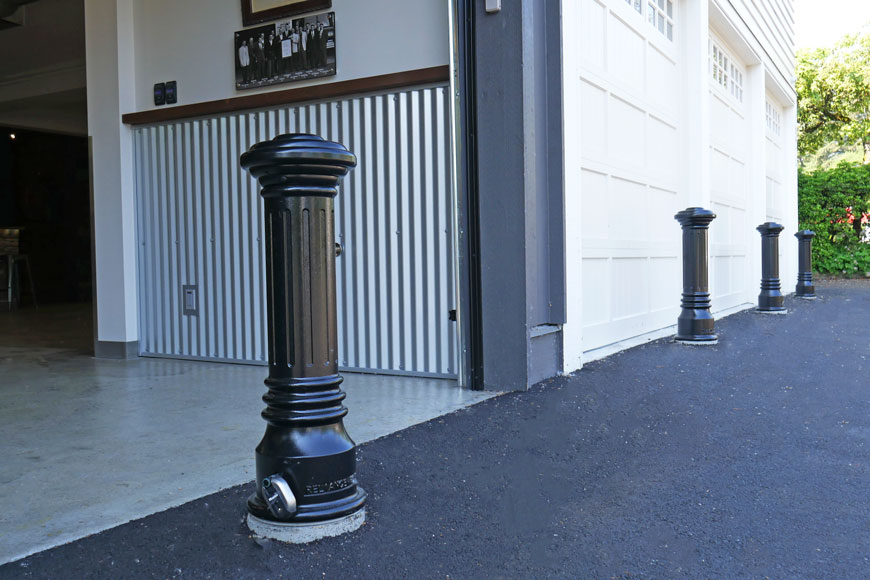
Site furnishings
Though most site furnishings (benches, litter receptacles, bike racks, and the like) are fixed in place, removable bollards are a traffic guiding device that can be put in place to prevent vehicle access, or removed to allow it. Aluminum is often used for removable bollard applications due to the lightness of the metal; it is much easier for event staff to move in or out of place.
Food and beverage
Canned food and beverages are another market where aluminum has dominated. Aluminum cans chill quickly and provide a highly-printable surface. The high levels of recyclability also make aluminum an attractive match for this industry. They also protect the flavor and integrity of the contents sealed inside due to their protection against oxygen, light, and other contaminants.

Appliance and technology
Home appliances have also benefited from the properties of aluminum. Its thermal properties make it ideal for refrigeration applications, while the light weight enables appliances to be easily moved and transported. With the development of the “brushed aluminum” finish, highly aesthetic products can be created for the high-end market. The technology company Apple has led the way in creating aluminum laptops, which are made from a single block of aluminum. Flat screen TVs also benefit from the lightweight property of aluminum; an equivalent steel product would be too heavy to hang on a wall.
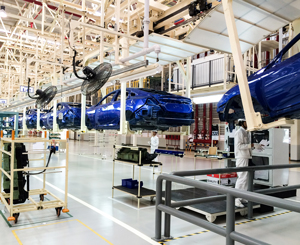
Automotive
Car makers are under more pressure to reduce the carbon footprint of their vehicles. Lightweight aluminum frames, body panels, and engines help this cause by improving the fuel economy. There are also other environmental benefits, as nearly 90% of automotive aluminum scrap is collected for recycling.
Aluminum recycling
Most aluminum can be recycled. Beverage cans and automobile parts are high catchment industries where material is collected and recycled effectively. Once used aluminum is collected, it is taken to a treatment facility, where it is sorted into different grades and cleaned. The metal is then melted down to remove the coatings, inks, and other impurities. During this stage, alloys can be added as necessary, after which it is cast into ingots. These ingots can be supplied to foundries where it is used for casting, or moved to other manufacturers for further processing. Recycled aluminum can be returned to the market as new products in as little as six weeks.
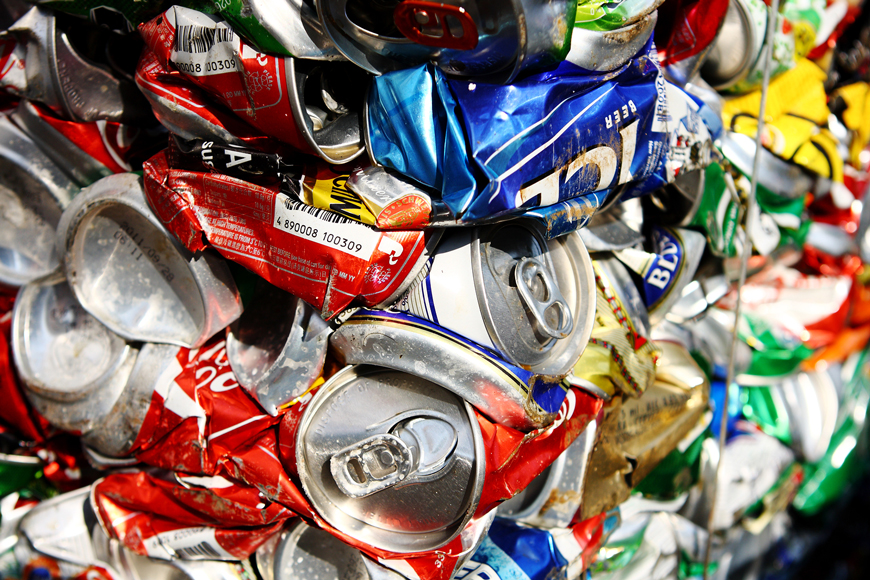
Aluminum cleaning and maintenance
Most aluminum products can be kept clean using plain water or a mild soap or detergent. Where stains are more stubborn, turpentine can be used or a non-etching chemical cleaner. For more cleaning power, wax-based polishes, abrasive waxes, or abrasive cleaners can be used. It is important to dry aluminum products after cleaning to avoid streaking, and cleaning residue must be removed from edges and joints.
For more information on aluminum, or to request a quote for a custom project, please contact us.


